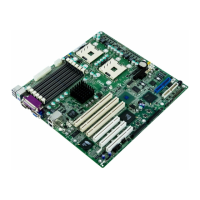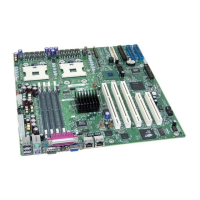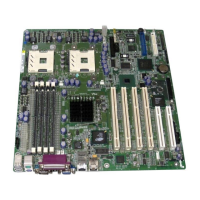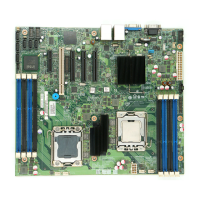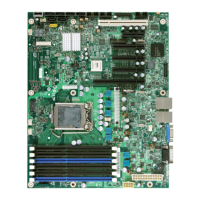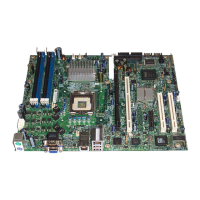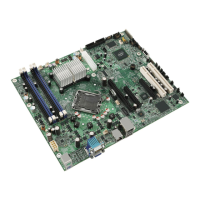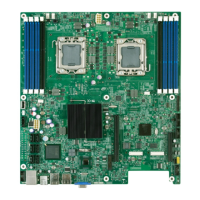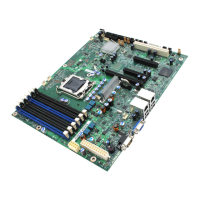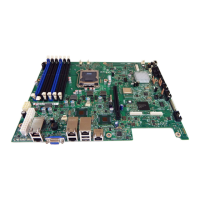Platform Management ArchitectureIntel® Server Board SE7520BD2 Technical Product Specification
96 Revision 1.3
Figure 14 shows the power supply control signals and their sources. To turn the system on, the
mBMC asserts the Power On signal and waits for the Power Good signal to assert in response,
indicating that DC power is on.
mBMC
Power Sub System
Power Good
Power ON
Figure 14. Power Supply Control Signals
The mBMC uses the Power Good signal to monitor whether the power supply is on and
operational, and to confirm whether the actual system power state matches the intended system
on/off power state that was commanded with the Power On signal.
De-assertion of the Power Good signal generates an interrupt that the mBMC uses to detect
either power subsystem failure or loss of AC power. If AC power is suddenly lost, the mBMC:
1. Immediately asserts system reset
2. Powers down the system
3. Waits for configured system off time (depending on configuration)
4. Attempts to power the system on (depending on configuration)
4.3.1.1 Power-up Sequence
When turning on the system power in response to one of the event occurrences listed in
Table 48, the mBMC executes the following procedure:
1. The mBMC asserts Power On and waits for the power subsystem to assert Power
Good. The system is held in reset.
2. The mBMC initializes all sensors to their Power On initialization state by running the
init agent.
3. The mBMC attempts to boot the system by running the FRB3 algorithm, if FRB3 is
enabled.
4.3.1.2 Power-down Sequence
To power down the system, the mBMC effectively performs the sequence of power-up steps in
reverse order. This operation can be initiated by one of the event occurrences listed in Table 48
and proceeds as follows:
1. The mBMC asserts system reset (de-asserts Power Good).

